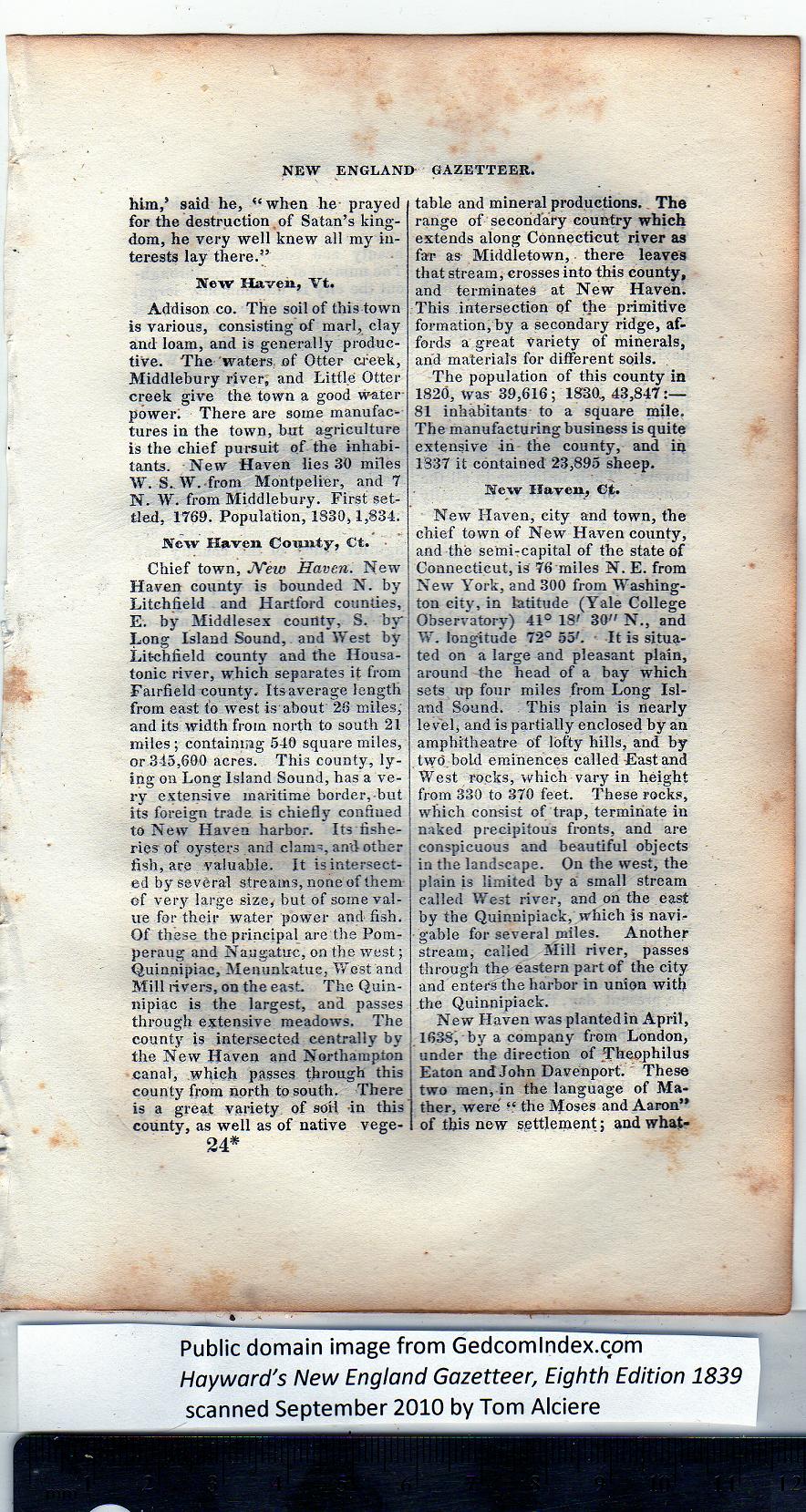|
him,* said he, “when he- prayed
for the destruction of Satan’s king-
dom, he very well knew all my in-
terests lay there.”
New Haven, Vt.
Addison co. The soil of this town
is various, consisting of marl, clay
and loam, and is generally produc-
tive. The waters, of Otter creek,
Middlebury river, and Little Otter
creek give the town a good water-
power; There are some manufac-
tures in the town, but agriculture
is the chief pursuit of the inhabi-
tants. New Haven lies 30 miles
W. S. W.-from Montpelier, and 7
N. W. from Middlebury. First set-
tled, 1769. Population, 1830,1,834.
New Haven Comity, Ct. •
Chief town, New Haven. New
Haven county is bounded N. by
Litchfield and Hartford counties,
E. by Middlesex county, S. by*
Long Island Sound, and West by
Litchfield county and the Housa-
tonic river, which separates it from
Fairfield county. Its average length
from east to west is about 28 miles;
and its width from north to south 21
miles; containing 540 square miles,
or 345,600 acres. This county, ly-
ing on Long Island Sound, has a ve-
ry extensive maritime border,-but
its foreign trade is chiefly confiued
to New Haven harbor. Its fishe-
ries of oysters and clams and other
fish, are valuable. It is intersect-
ed by several streams, noneof them
of very large size, but of some val-
ue for their water power and fish.
Of these tbe principal are tbe Pom-
peraug and Naugatuc, on the west;
Quinnipiac, Memmkatue, West and
Mill Hvers, on the east. The Quin-
nipiac is the largest, and passes
through extensive meadows. The
county is intersected centrally by
the New Haven and Northampton
canal, .which passes through this
county from north to south. There
is a great variety, of soil -in this
county, as well as of native vege-
24* |
table and mineral productions. The
range of secondary country which
extends along Connecticut river as
far as Middletown, - there leaves
that stream, crosses into this county,
and terminates at New Haven.
This intersection of the primitive
formation, by a secondary ridge, af-
fords a great Variety of minerals,
and materials for different soils.
The population of this county in
1820, was 39,616; lSSO., 43,847
81 inhabitants to a square mile.
The manufacturing business is quite
extensive in the county, and in
1837 it contained 23,895 sheep.
New Haven, Ct.
New Haven, city and town, the
chief town of New Haven county,
and the semi-capital of the state of
Connecticut, is 76 miles N. E. from
New York, and 300 from Washing-
ton city, in latitude (Yale College
Observatory) 41° 18' 30" N., and
W. longitude 72° 55'. ■ It is situa-
ted on a large and pleasant plain,
around the head of a bay which
sets up four miles from Long Isl-
and Sound. This plain is nearly
level, and is partially enclosed by an
amphitheatre of lofty hills, and by
two.bold eminences called East and
West rocks, which vary in height
from 330 to 370 feet. These rocks,
which consist of trap, terminate in
naked precipitous fronts, and are
conspicuous and beautiful objects
in the landscape. On the west, the
plain is limited by a small stream
called West river, and on the east
by the Quinnipiack, which is navi-
gable for several miles. Another
stream, called Mill river, passes
through the eastern part of the city
and enters the harbor in union with
the Quinnipiack.
New Haven was planted in April,
1638j by a company from London,
under the direction of Theophilus
Eaton and John Davenport. These
two men, in the language of Ma-
ther, were “ the Moses and Aaron**
of this new settlement; and what- |
